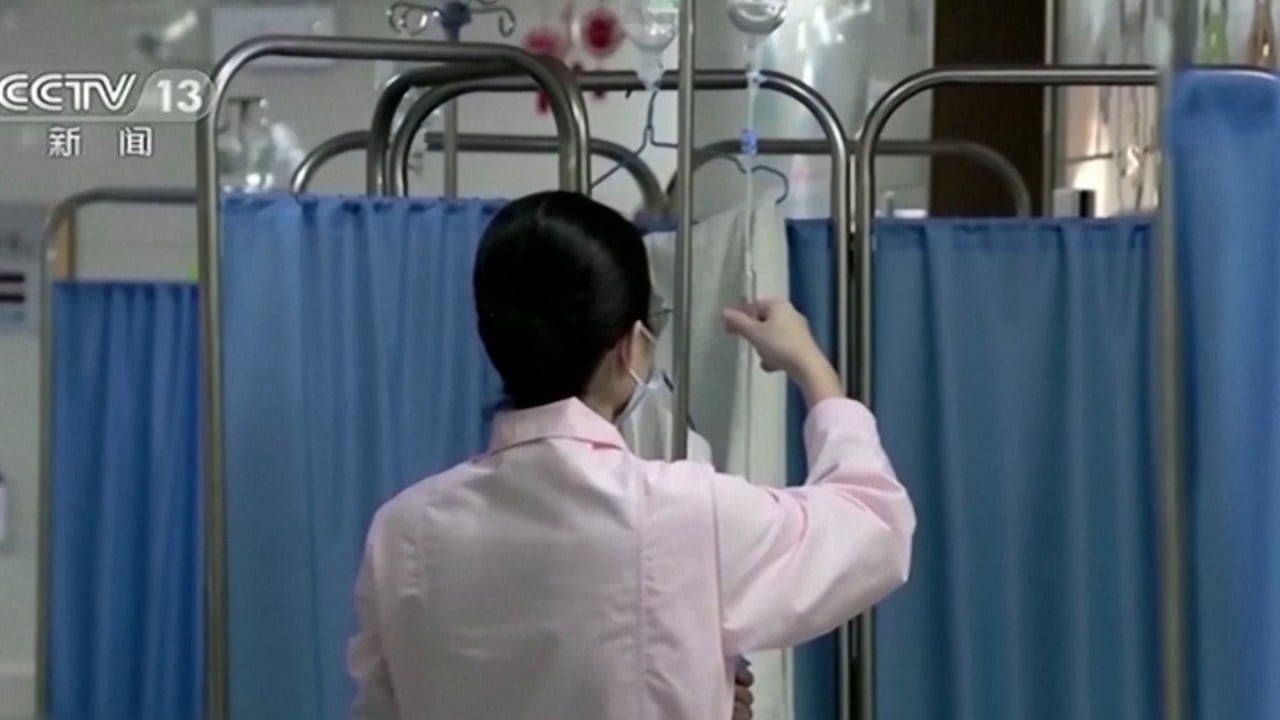“Efforts should be made to implement effective epidemic prevention and control measures in key locations with dense populations, such as schools, childcare institutions and nursing homes,” Mi said.
“This includes minimising personnel movement and visits.”
Hospitals have also been told to improve their ability to grade patients according to the severity of infection, for better identification of the seriously ill.
Different age groups were being affected by different pathogens, but influenza was a major culprit across the board, an official from the Chinese Centre for Disease Control and Prevention said.
Wang Huaqing, the CDC’s chief immunisation planning expert, said mycoplasma pneumoniae infections were mostly seen among the five–14 age group, whereas the rest were mostly sickened by the different types and combinations of viruses.
Respiratory diseases caused by other pathogens, including RSV, adenovirus and influenza virus, began to jump in October.
Though Covid-19 is among the circulating pathogens, it has not been named as a top cause for the surge.
In Beijing, influenza has been the leading reported disease across all ages for five consecutive weeks, according to the city’s health commission
Mainland media reported long queues at both outpatient or inpatient paediatric clinics across the country, with many hospitals expanding their services to cope with the numbers.
Tianjin Children’s Hospital has been operating around the clock, dealing with more than 13,000 paediatric patients daily in the outpatient and emergency departments, a record high, according to Tianjin Television and Radio Station.
A maternal and child health hospital in the northern province of Hebei had merged the gynaecology and obstetrics wards to make more room for sick children, it said on its official WeChat account.
The Civil Aviation General Hospital in Beijing also said last week that its paediatric outpatient clinic was handling 550-650 visits each day, an increase of 30 to 50 per cent compared with the same period last year.
The surge prompted the WHO to ask China last week to provide more information about the spike in respiratory diseases among children in its northern regions.
Mycoplasma pneumonia infections usually cause mild respiratory symptoms but experts and officials said this year’s outbreak was particularly serious because of the bacteria’s resistance to macrolide antibiotics.
Concern about the surge has prompted a number of cities and provinces to publish lists of places parents can get treatment for their children.
Health commissions in several regions, such as Shandong province, Guangdong province, and Hohhot in Inner Mongolia, have compiled lists of medical institutions offering paediatric diagnostic and treatment services.
These lists include information such as the maximum patient capacity and number of paediatric inpatient beds.
Families can choose medical institutions based on their location and medical needs.







